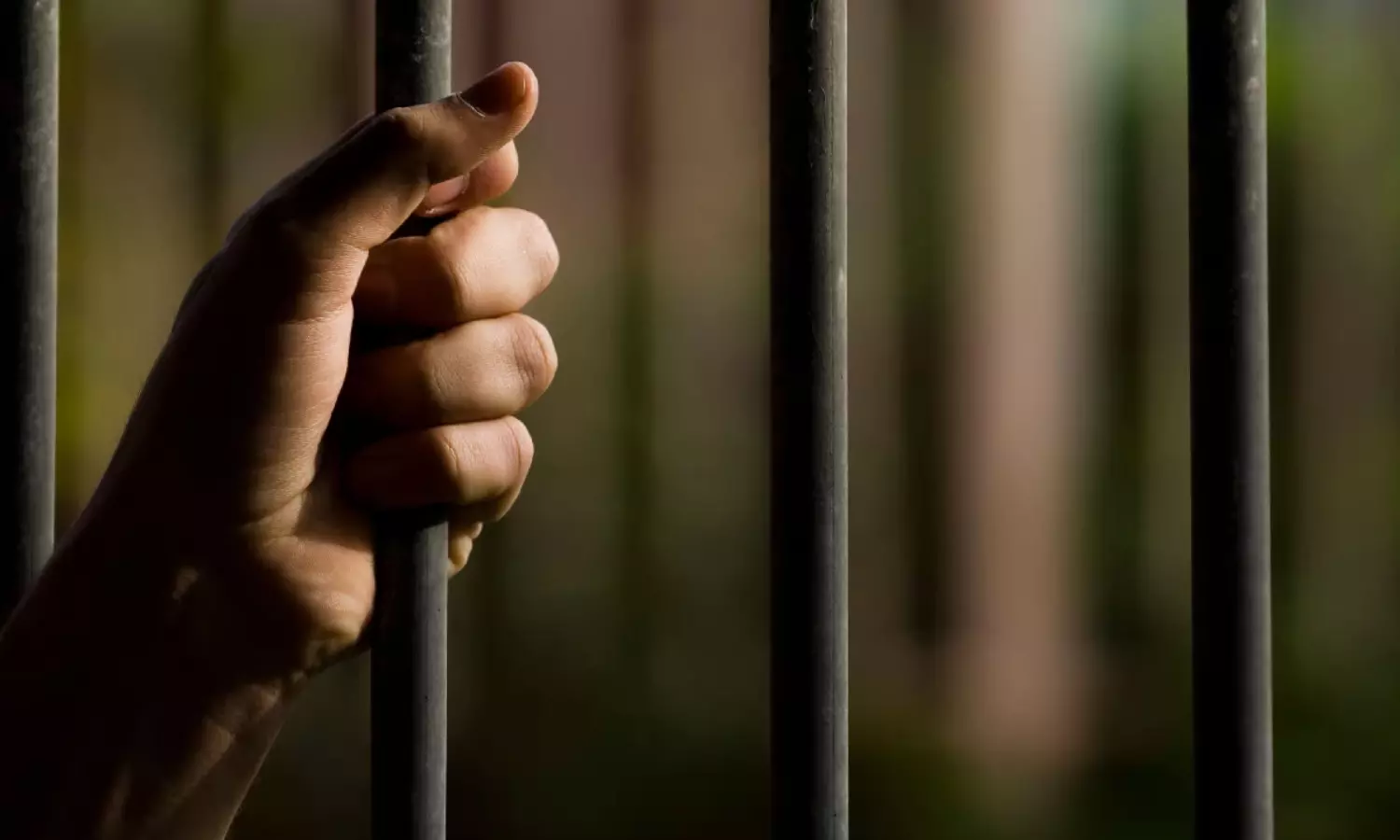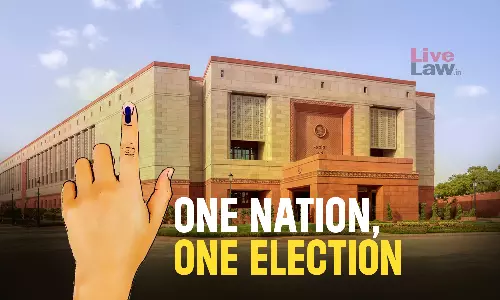
“Women undertrials, especially those from marginalized backgrounds, suffer prolonged detention, not because they are guilty, but because they are poor."-Justice V.R. Krishna IyerThe Model Prisons and Correctional Services Act, 2023[1], defines an under-trial prisoner as a person who has been committed to judicial custody pending investigation or trial and has not yet been convicted....
“Women undertrials, especially those from marginalized backgrounds, suffer prolonged detention, not because they are guilty, but because they are poor."
-Justice V.R. Krishna Iyer
The Model Prisons and Correctional Services Act, 2023[1], defines an under-trial prisoner as a person who has been committed to judicial custody pending investigation or trial and has not yet been convicted. According to the Prison Statistics Report, 2022 released by the National Crime Records Bureau[2], the total number of undertrials in Indian prisons exceeds the number of convicts by three times. With a mounting count of 4, 34,302[3], undertrials make up a majority of India's prison population. Because of their conspicuous presence, the rights of under-trial prisoners and their protection have long since been an extensively discussed human rights concern, addressed by national and international conventions, human rights commissions, and the Supreme Court of India.
One of the recent, much-discussed developments in undertrial rights is Section 479(1) of the Bharatiya Nagarik Suraksha Sanhita, 2023[4]. This section orders the release on bail of undertrial prisoners who have been detained for up to one-half of the maximum imprisonment prescribed for the offense with which they are accused. For first-time offenders, this period is reduced to one-third of the maximum imprisonment. Furthermore, no person is to be detained for more than the maximum period of imprisonment prescribed for the offense with which they are accused[5]. The aim of this provision is to tackle the issue of overcrowding and prolonged detention of undertrials and is applicable to all undertrials regardless of whether the case was registered them before or after July 2024.[6]
Despite Section 479(1) being gender-neutral, the Supreme Court of India has recently directed Jail Superintendents to “make special efforts” so that women who may meet the criteria laid down by the section are identified.[7] By doing so, the Supreme Court has recognized a larger issue with the Indian prison system, which is that it is “evidently gender exclusionary,” as described by the 2022 Justice Amitava Roy Committee Report[8].
Women undertrials, despite facing tremendous challenges while being in judicial custody, often tend to be overlooked. The number of women under trial, though exceeding 1 lakh as of 31st December 2022[9], is significantly less than that of their male counterparts, leading to a general ignorance regarding their well-being. Additionally, by virtue of being women prisoners, more nuanced challenges with respect to health, resources, infrastructure, parenthood, safety, and protection come into play, which essentially differ from those faced by the mass majority of male undertrials in India. Lastly, women undertrials bear the brunt of the lack of gender sensitivity and inclusivity in the implementation of constitutional and statutory protections. This article highlights the challenges faced by women under trial and emphasizes the need for special attention and comprehensive measures to secure their rights.
Protections For Women Undertrials
In theory, the Indian legal system has developed and formulated an extensive framework to protect the rights of undertrial prisoners, and in particular, women undertrials. The Indian Constitution, the supreme law of the country, protects every person's right to life and personal liberty, a right that can only be deprived through a procedure established by law.[10] Additionally, Article 39A,[11] part of the directive principles, aims to secure equal opportunity for justice in the Indian legal system. It makes it a state objective to provide free legal aid for undertrials who lack the resources to hire a lawyer. At the same time, the Indian Constitution has ensured “equality before the law” and “equal protection of laws” for all persons under Article 14.[12] Article 15[13] prohibits the State from discriminating on the grounds of sex, but Clause 3[14] of this article allows the State to make special provisions for women. The reason for allowing forms of affirmative action or positive discrimination for women is the recognition that women often slip through the cracks of a uniform, standardized law.
International conventions ratified by India, such as the International Covenant on Civil and Political Rights, also recognize that under-trial prisoners should be treated humanely, in line with their status as “unconvicted persons.”[15] Notably this Covenant, under Article 3, also mandates that State Parties ensure equal enjoyment of this right by both men and women.[16] Similarly, the Convention on the Elimination of All Forms of Discrimination against Women, ratified by India in 1993,[17] obligates the State to ensure that women are protected against discrimination. The State, along with refraining from acting in a discriminatory manner against women and ensuring that public institutions do the same, must also formulate legal protections for the rights of both men and women on an equal basis.[18] It prohibits discrimination against women in the fields of employment, education, and healthcare. Additionally when it comes to healthcare the Covenant and requires appropriate, and, if necessary, free medical and nutritional facilities related to pregnancy.[19]
Prisons are a State subject,[20] with State Governments having exclusive jurisdiction and responsibility to manage prisons and prisoners. However, the Central Government has passed several acts, rules, advisories, guidelines, and manuals to regulate prison functioning and “support” State Governments in their work.[21] The most recent such endeavour has been the Model Prisons and Correctional Services Act, 2023,[22] which aims to replace colonial acts that regulated prisons.
This Act aims to provide a benchmark for all States regarding prison administration and infrastructure. As per this recent act, prisons “may” separate undertrial prisoners from convicts, high-security prisoners, and habitual prisoners.[23] For women prisoners, the government again “may” establish exclusive women prisons as and when “it may consider necessary.”[24] In non-exclusive prisons, though, the act mandates that women prisoners be either lodged in separate buildings or in a separate part of the same building to ensure no contact between male and female prisoners, with minimal deployment of male staff.[25] The act also states that all basic facilities provided to male prisoners “may” also be provided to women prisoners.[26] It further acknowledges the gender-specific needs of women, including provisions for pregnant women, women with children, and addressing sexual harassment complaints.
The reason the act is filled with such “may” provisions is rooted in the ground reality of India's prison system: it lacks the capacity and resources to successfully and mandatorily ensure compliance with such provisions. This reality unfolds in many detrimental forms for women undertrials.
Challenges Faced By Women Undertrials
1. Lack of Legal Representation
It has been well established through a plethora of Supreme Court judgments such as Hussainara Khatoon[27] that Article 21[28] encompasses the right to legal representation as well as a speedy trial. However, speedy trials in India are still a distant dream, and one of the many reasons for such delay is the non-availability of legal counsel. Due to the lack of legal aid, procuring bail becomes quite difficult for many undertrials. Though the Supreme Court constantly advocates that “Bail is the rule, jail is the exception,”[29] the lack of adequate resources among undertrials leads to the opposite effect. The result is the prolonged judicial detention of lakhs of undertrials, many of whom did not have access to legal aid.
All women are entitled to free legal services under Section 12 of the Legal Services Authority Act, which was passed in 1987 with the intention of providing “free and competent legal services to the weaker sections of society.”[30] Women from socially and economically weaker classes face an obvious hassle in engaging a good lawyer. Additionally, the lack of family support and money makes it hard to provide security and solvency proof to furnish bail. This is why awareness of the rights granted to them under the Constitution, by the Supreme Court, and the Legal Services Act becomes important—an awareness that, unfortunately, many women prisoners lack. There is a general lack of awareness regarding such important rights that plagues women undertrials.[31] This leads to a situation of underutilization, where the right has been given but there are no takers.
2. Overcrowding and poor quality of life
Lack of legal aid leads to a domino effect, where trials are delayed and undertrials are unable to procure bail, resulting in prolonged detention and, hence, overcrowding. Furthermore, due to this domino effect, development in prison infrastructure and resources is unable to keep pace with the rapidly increasing number of undertrials.
As of 2022, there are only 34 jails in India exclusively for women prisoners. Twenty States/UTs do not have any such exclusive jails. Even among the existing women jails, prisons in states like Mizoram, Tripura, Maharashtra, and Bihar are extremely crowded, with occupancy rates ranging from 110% to 168%. More importantly, the capacity of regular jails and jails exclusively for women is increasing at a much slower rate than the increase in the number of women prisoners.[32]
With such an extent of overcrowding, separation of undertrials from convicts becomes difficult, and separation from high-risk and habitual offenders is impossible. Huge number of inmates puts pressure on the already scarce resources of the prison, also leading to poor inmate-staff ratio. Infections and diseases easily spread and prisoners compete for basic facilities such as bedding, water, and clothes.
3. Lack of Adequate medical care and facilities
The shortage of doctors and medical equipment has been recognized by a Parliamentary Standing Committee on Women in Detention.[33] The lack of specialized doctors, such as gynaecologists and obstetricians, puts the health of women prisoners in serious jeopardy. The Model Prisons Act, 2023, which mandates “necessary arrangements” for the medical care and diet of pregnant women prisoners,[34] is quite vague in its wording. Regular check-ups on the physical, menstrual, and reproductive health of women are a must. However, the lack of training for jail staff to understand and meet the gender-specific medical requirements of women prisoners aggravates the problem of ignorance of sensitive medical issues.
Prolonged detention causes severe psychological effects, making the need for specialized psychologists and psychiatrists imminent. However, their absence further increases the risk of suicide and self-harm. Another major concern is the availability of adequate sterilized sanitary pads for women prisoners, an area where Indian prisons have a poor track record.[35] That women prisoners need medical care tailored to their specific needs is a given, and the lack of it leads to poor physical and psychological health.
4. Harassment and Abuse
In Sheela Barse v. State of Maharashtra,[36] the Supreme Court, while directing prisons to ensure legal assistance to poor undertrials, also addressed the torture and ill-treatment of women suspects in police lock-ups. Even in D.K. Basu v. State of West Bengal the Supreme Court,[37] while securing Right to Life and Liberty of undertrials, condemned violence, torture and rape under the custody of police and other government agencies. Such treatment of women undertrials is also very much a reality in prisons.
There are hardly any women's prisons in India, compounded by a shortage of women officials. In a writ petition of which the Supreme Court has taken cognizance, Tapas Bhanja alleged that women in prisons were being 'supplied' to male prisoners, with some even getting pregnant while in judicial custody.[38] While completely separating women prisoners from their male counterparts and staff will not necessarily eliminate all cases of sexual abuse and harassment, the truth is that with the current system in place, allegations like Bhanja's are not far-fetched.
Without training, sensitization, regulation, and accountability of jail staff, women remain vulnerable to physical and sexual violence at the hands of officials. A general attitude of intolerance and irresponsible behaviour by prison staff toward women prisoners, leading to the compromise of their rights, has also been noted by the Parliamentary Standing Committee on Women in Detention.[39]
The reality of the rights of women undertrials is a paradox: while their rapidly rising numbers and the resultant overcrowding—due to the lack of legal aid and bail—have led to poor quality of life and inadequate prison resources, their smaller numbers compared to male counterparts have resulted in lesser recognition of their rights and needs. This is a deadly cycle that India's prison system must break.
The root of the problem is the lack of legal representation. The right to legal aid for women undertrials is secured by the Constitution, the Supreme Court, and the Legal Services Authorities Act. Diligent awareness programs to educate women undertrials about their rights are the need of the hour. State and District Legal Services Authorities must ensure regular visits and legal consultations with women undertrials and ensure that they are not side-lined.
The dearth of women-only prisons in India is glaring. Every State/UT must have at least one women-only prison, preferably more. With the number of women prisoners evidently increasing, States must build more well-equipped women's prisons to meet the needs of the mounting prisoner population. The basic, medical, psychological, and recreational needs of women prisoners must not be given lesser importance than those of their male counterparts. In fact, prison infrastructure must be moulded to the specific requirements of women prisoners.
Medical and health facilities cannot be compromised, especially for pregnant and post-natal women. Regular visits by specialized doctors, including gynaecologists, psychiatrists, and counsellors, are a must. Additionally, the staff must be well-trained and sensitized to the gender-specific needs of prisoners, with an effective accountability framework in place.
Women prisoners have long been given less priority. Their rights and the challenges they face have not been widely discussed or researched. However, women undertrials must not be treated as second-class inhabitants of Indian prisons—they deserve the immediate attention of our legal system.
Arushi Bajpai is an Assistant Professor & Vaidehi Sharma is a student, at Jindal Global Law School, O.P. Jindal Global University. Views are personal.
[1] The Model Prisons and Correctional Services Act 2023, s 2(33).
[2] National Crime Records Bureau, 'Prison Statistics India 2022' (Ministry of Home Affairs 2024).
[3] National Crime Records Bureau, 'Prison Statistics India 2022' (Ministry of Home Affairs 2024).
[4] The Bharatiya Nagarik Suraksha Sanhita 2023, s 479(1).
[5] The Bharatiya Nagarik Suraksha Sanhita 2023, s 479(1).
[6] Khanna G, 'Supreme Court Allows Benefit of Section 479 BNSS to Undertrials in Cases Registered before July 1, 2024' (Livelaw.in23 August 2024)
[7] Amisha Shrivastava, 'Jail Superintendents Should Make Special Efforts to Identify Women Prisoners Eligible for Release U/S....' (Livelaw.in21 November 2024) <https://www.livelaw.in/top-stories/jail-superintendents-should-make-special-efforts-to-identify-women-prisoners-eligible-for-release-us-479-of-bnss-supreme-court-275951> accessed 27 February 2025.
[8] Khan K, 'Denied Basic Facilities, Women Prisoners Impacted Far Worse than Men: SC Panel on Prison Reforms' (The Indian Express5 September 2023)
[9] National Crime Records Bureau, 'Prison Statistics India 2022' (Ministry of Home Affairs 2024).
[10] The Constitution of India 1950, art 21.
[11] The Constitution of India 1950, art 39A.
[12] The Constitution of India 1950, art 14.
[13] The Constitution of India 1950, art 15(1).
[14] The Constitution of India 1950, art 15(3).
[15] The International Covenant on Civil and Political Rights 1976, art 10.
[16] The International Covenant on Civil and Political Rights 1976, art 3.
[17] 'Women's Rights in India an Analytical Study' (2021) https://nhrc.nic.in/sites/default/files/Women%E2%80%99s%20Rights%20in%20India%20complete_compressed.pdf
[18] The Convention on the Elimination of All Forms of Discrimination against Women 1981, art 2.
[19] The Convention on the Elimination of All Forms of Discrimination against Women 1981, art 12
[20] The Constitution of India 1950, art 246.
[21] 'Ministry of Home Affairs | Government of India' (Mha.gov.in26 February 2024)
[22] Model Prisons and Correctional Services Act 2023.
[23] Model Prisons and Correctional Services Act 2023, s 5(3).
[24] Model Prisons and Correctional Services Act 2023, s 30(1).
[25] Model Prisons and Correctional Services Act 2023, s 30.
[26] Model Prisons and Correctional Services Act 2023, s 30(1).
[27] Hussainara Khatoon (IV) v. Home Secy., State of Bihar, (1980) 1 SCC 98.
[28] The Constitution of India 1950, art 21.
[29] Shrivastava A, '“Bail Is the Rule, Jail Is the Exception” Even in Special Statutes like UAPA : Supreme Court' (Livelaw.in13 August 2024)
[30] Legal Services Authorities Act 1987, s 12.
[31] IANS, '“Legal Aid Is Hardly Available to Women Prisoners”' (@bsindia10 July 2018)
[32] National Crime Records Bureau, 'Prison Statistics India 2022' (Ministry of Home Affairs 2024).
[33] Ministry of Home Affairs, Advisory on Mandatory Action by Police in Cases of Crime against Women (Advisory, Government of India 2022) https://www.mha.gov.in/sites/default/files/2022-12/22WomensDiv_Advisory_CommitteeAdvisory_15112022%5B1%5D.pdf accessed 21 March 2025.
[34] Model Prisons and Correctional Services Act 2023, s. 31.
[35] Gaurav Vivek Bhatnagar, 'Overcrowding, Inadequate Staff and Lack of Menstrual Products in Haryana Prisons: Study' (The Wire2025)
[36] Sheela Barse v. State of Maharashtra, (1983) 2 SCC 96.
[37] D.K. Basu v. State of W.B., (1997) 1 SCC 416.
[38] PTI, 'SC Takes Cognisance of Women Prisoners Getting Pregnant in Jails in West Bengal' (The Times of India9 February 2024)
[39] Ministry of Home Affairs, Advisory on Mandatory Action by Police in Cases of Crime against Women (Advisory, Government of India 2022) https://www.mha.gov.in/sites/default/files/2022-12/22WomensDiv_Advisory_CommitteeAdvisory_15112022%5B1%5D.pdf accessed 21 March 2025.




